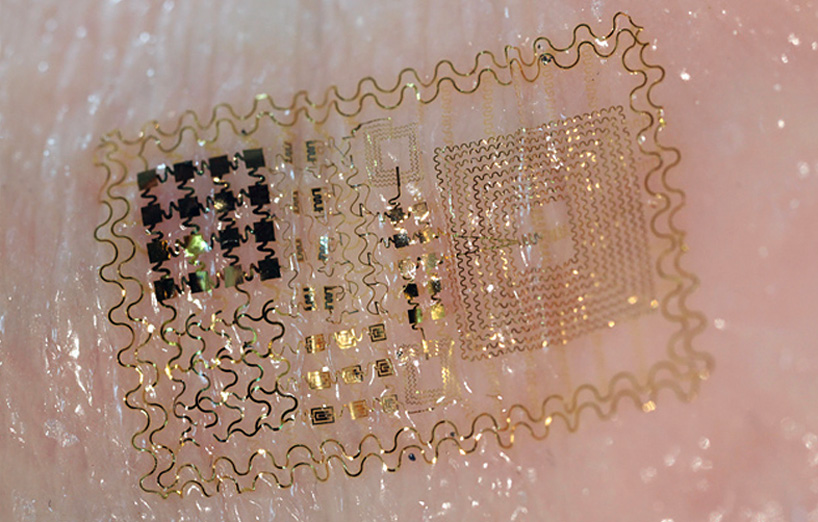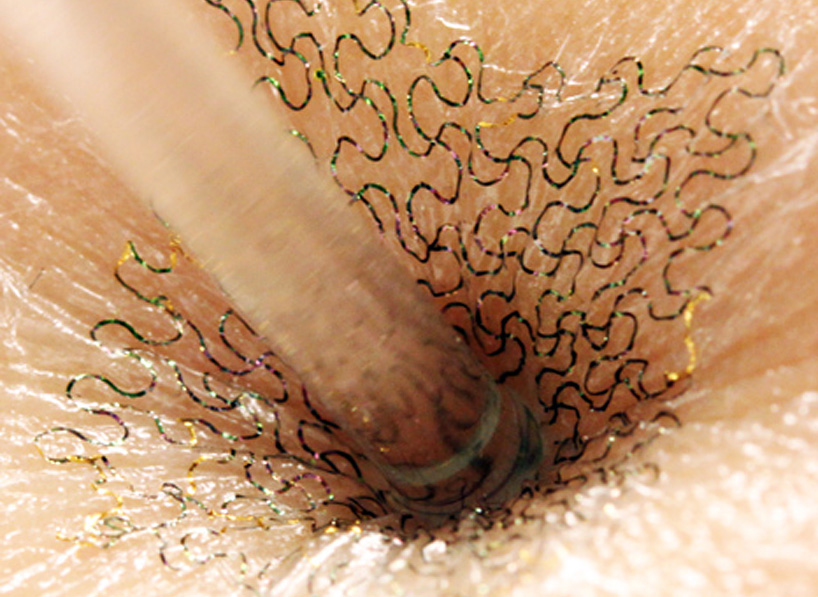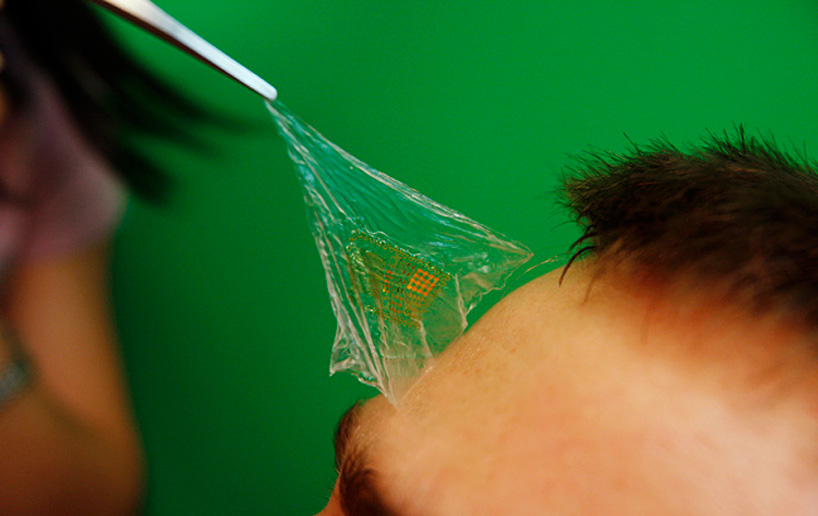KEEP UP WITH OUR DAILY AND WEEKLY NEWSLETTERS
PRODUCT LIBRARY
designboom is presenting the sound machines of love hultén at sónar festival in barcelona this june!
connections: 74
BMW releases the upgraded vision neue klasse X, with a series of new technologies and materials especially tailored for the upcoming electric smart car.
following the unveiling at frieze LA 2024, designboom took a closer look at how the color-changing BMW i5 flow NOSTOKANA was created.
connections: +630
each unit draws inspiration from emergence, featuring a hexahedron-based structure that facilitates integration into larger systems.
connections: 96

 closer view of the system
closer view of the system the ‘filamentary serpentine’ fabrication system makes the circuitry flexible both on and off the skin
the ‘filamentary serpentine’ fabrication system makes the circuitry flexible both on and off the skin adhering to the skin via van der waals electrostatic force, the device requires no glue, tape, gels, or bulky wiring
adhering to the skin via van der waals electrostatic force, the device requires no glue, tape, gels, or bulky wiring the test depicted her demonstrates that the system can be used without interference coupled with actual temporary tattoos, an invaluable opportunity for medical diagnostics in children
the test depicted her demonstrates that the system can be used without interference coupled with actual temporary tattoos, an invaluable opportunity for medical diagnostics in children







